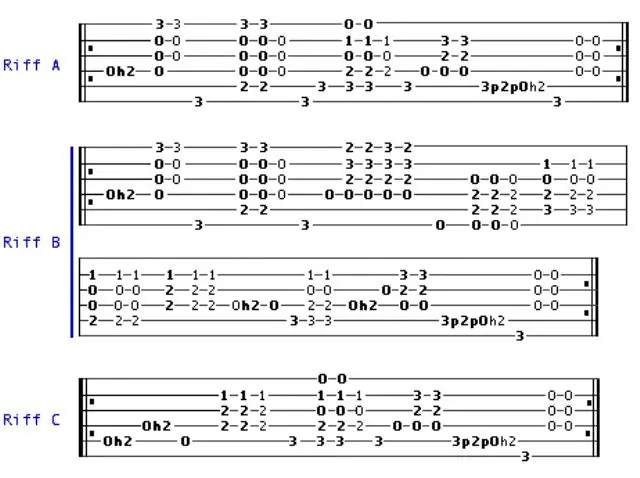Tablatures are a convenient alternative for recording and performing guitar music. This system often records notes for electric guitars and basses. It differs from the usual five-line notation in that the number of rulers coincides with the number of strings on the instrument (the most common types of tablatures are built on 4 and 6 lines), and instead of a note circle or above it, the number of the fret being clamped is placed. Calm notes and pause signs coincide with analogs from the five-linear system.

It is necessary
- Guitar (any of the family);
- Collection of works in tablatures;
- For an electric guitar, the appropriate technique (amplifier, processor, cables).
Instructions
Step 1
Open the collection and select a piece that you like. You can listen to it beforehand if it is recorded in audio format. Then start parsing the text.
Do you remember how you learned to read? Most likely, at first in syllables, then fluency gradually increased, now you run through these lines in a few seconds. You also need to start reading tablatures slowly, as if by syllables. First, learn the first phrase of a piece, say four measures. Play at such a tempo that the left hand has time to grip the string and the right hand can pluck. When doing this, pay attention to specific touches: braces, slides, vibrato, trills, and others. In different collections, different designations may be used for the same technique.
Step 2
After playing the section slowly several times, then at a medium pace, play it in the original. Move on to the next section and learn it in the same way: slow - medium - fast. Connect the two pieces.
Step 3
Learn and attach the rest of the song in the same way. Get ready that it will take more than one day.






